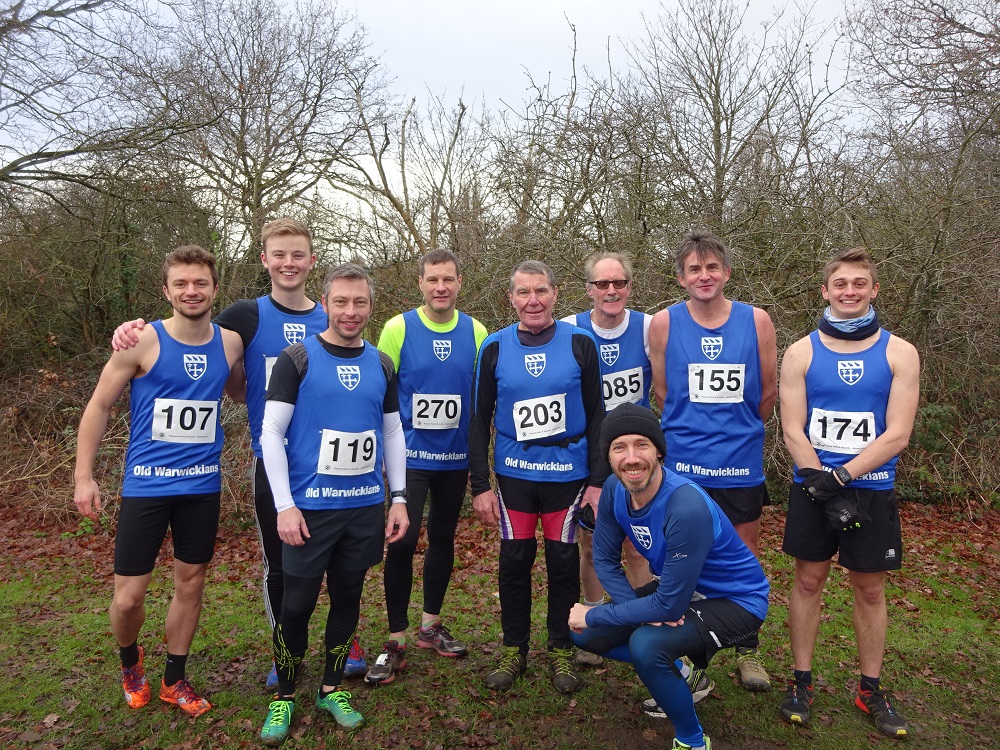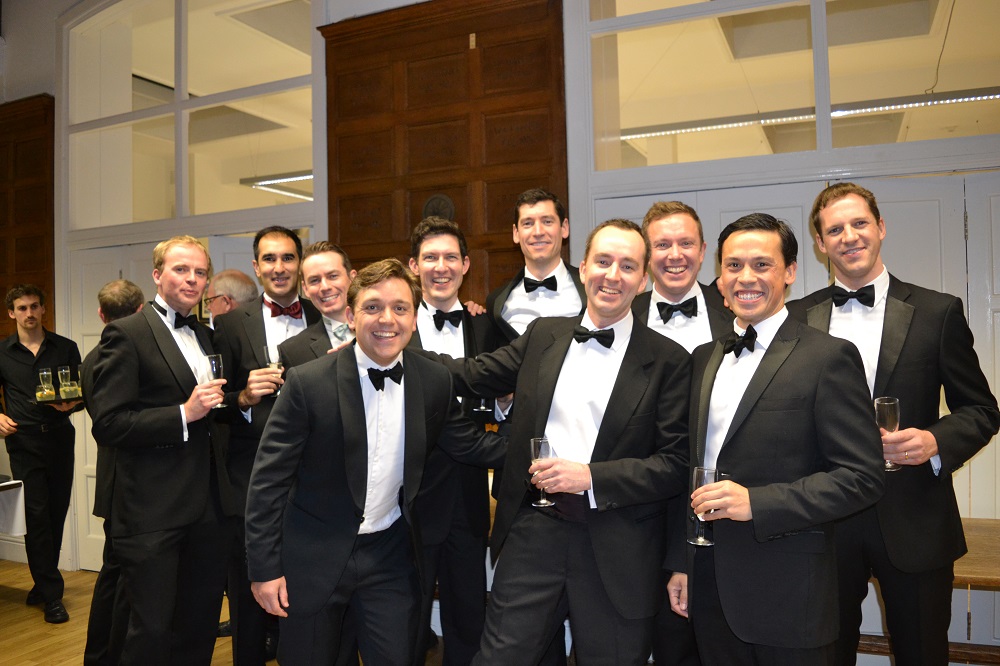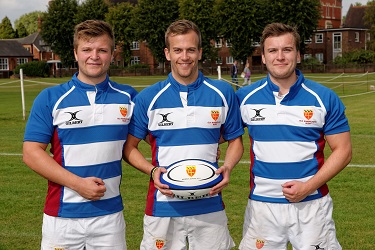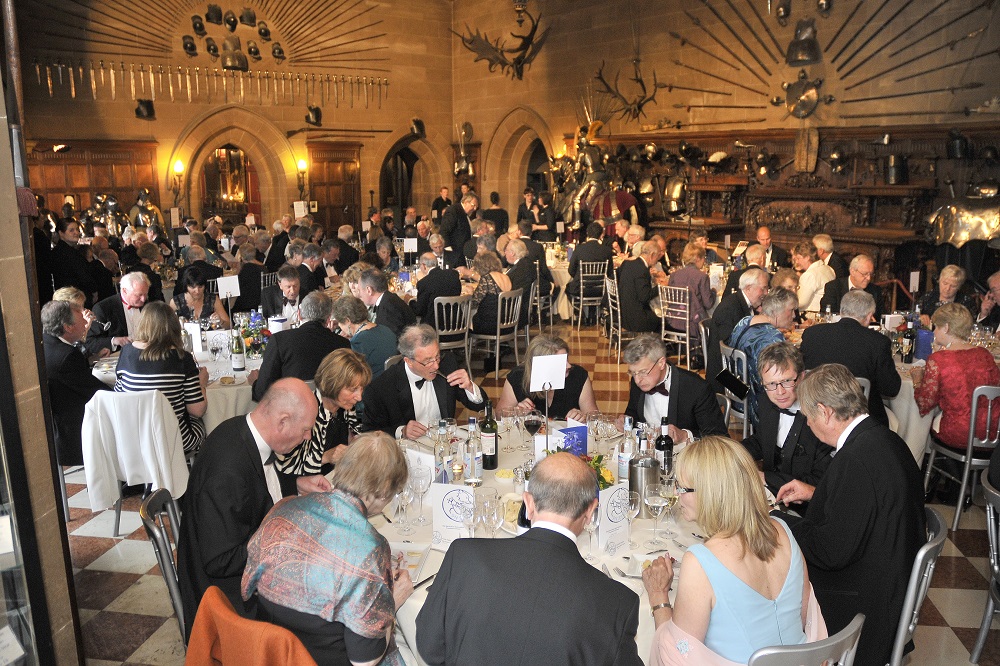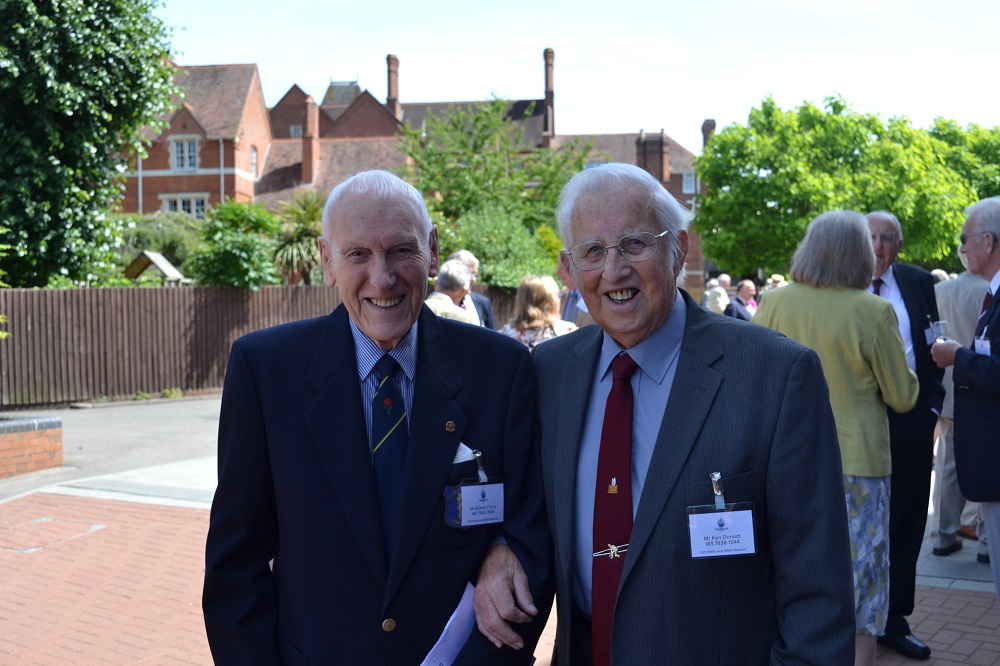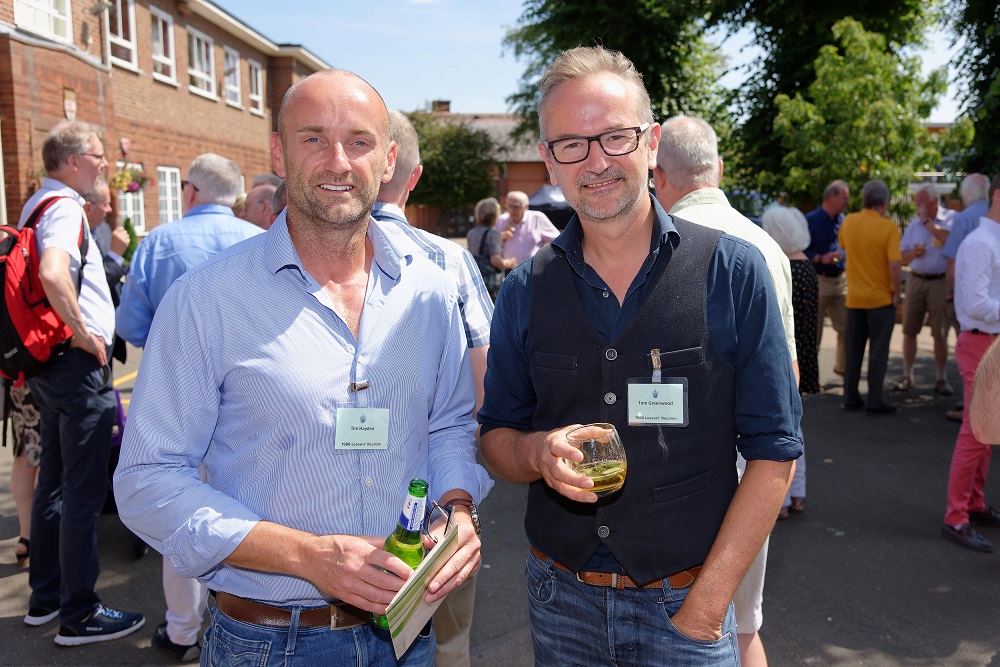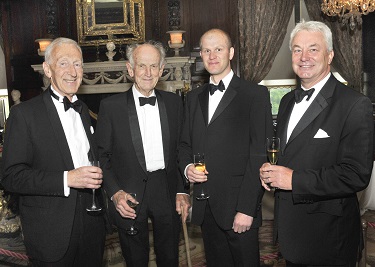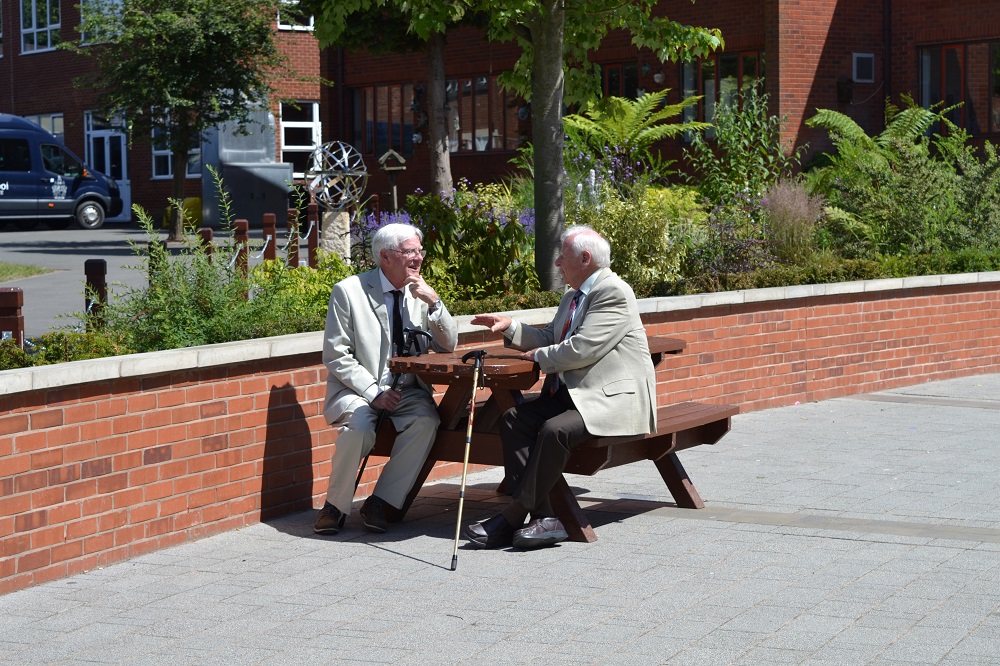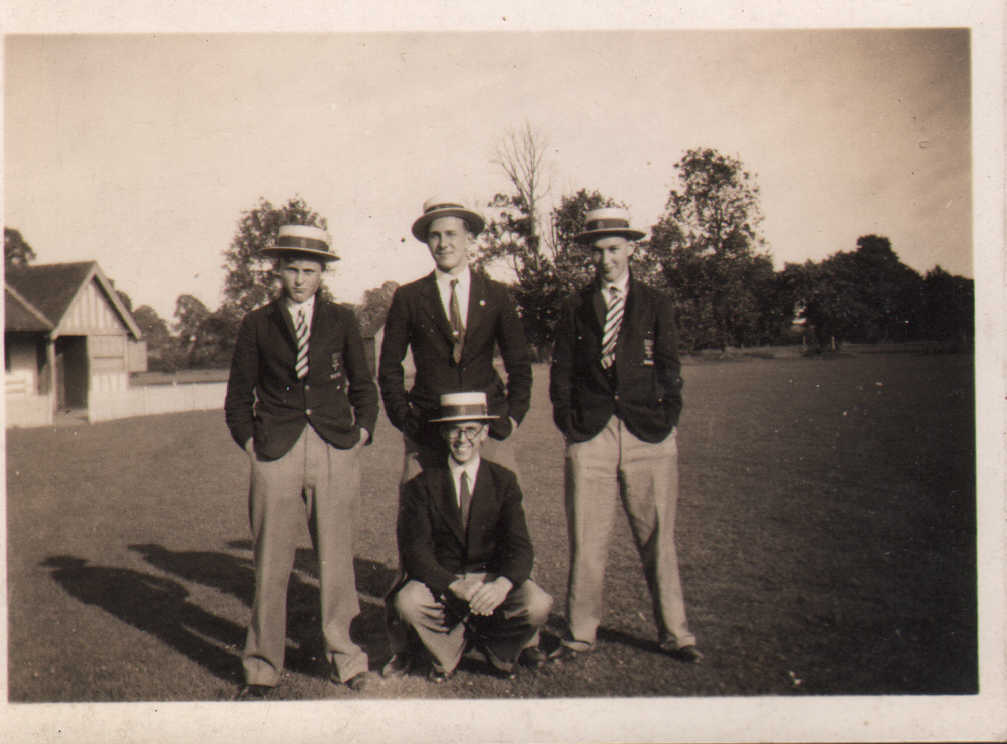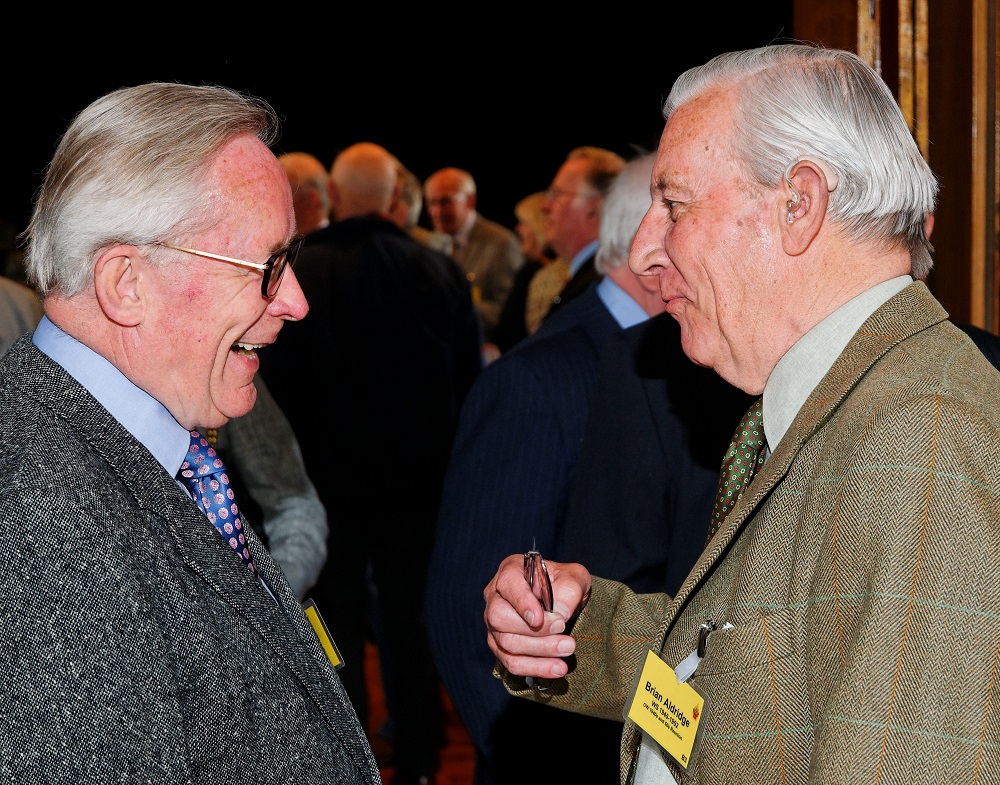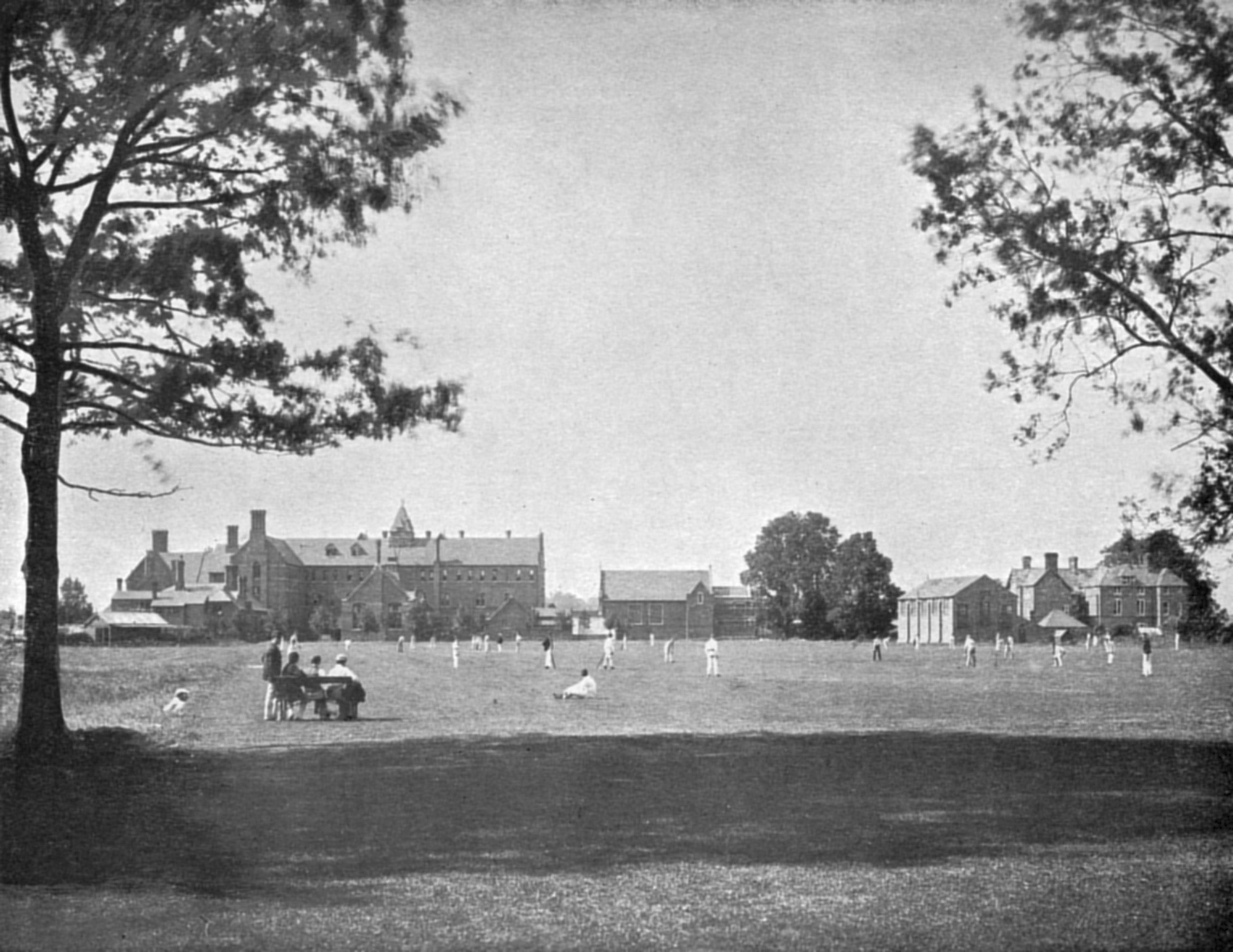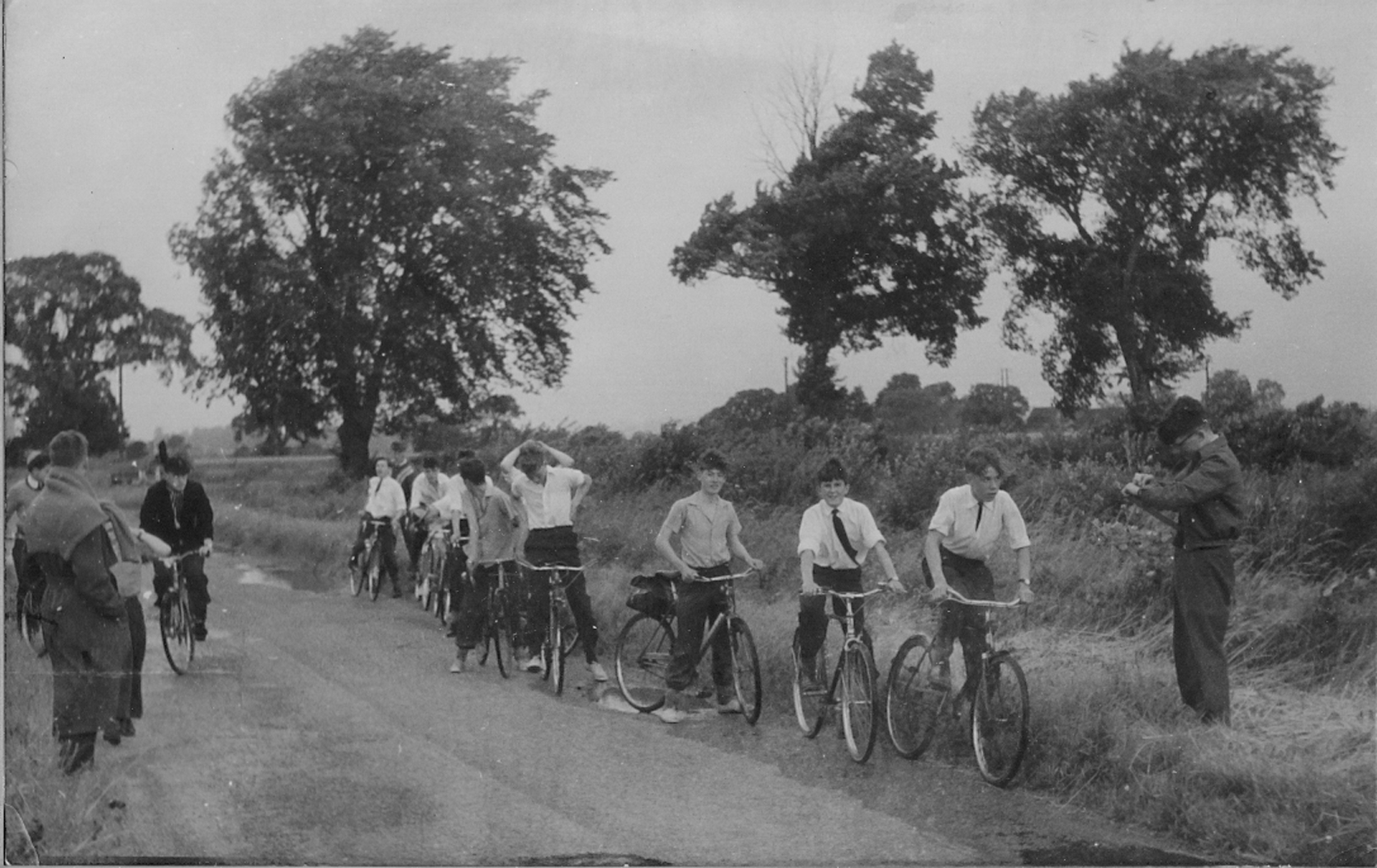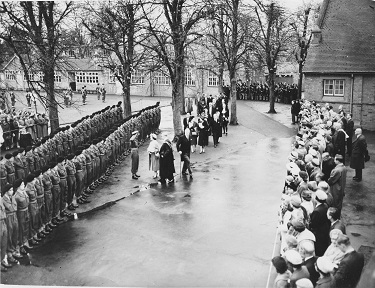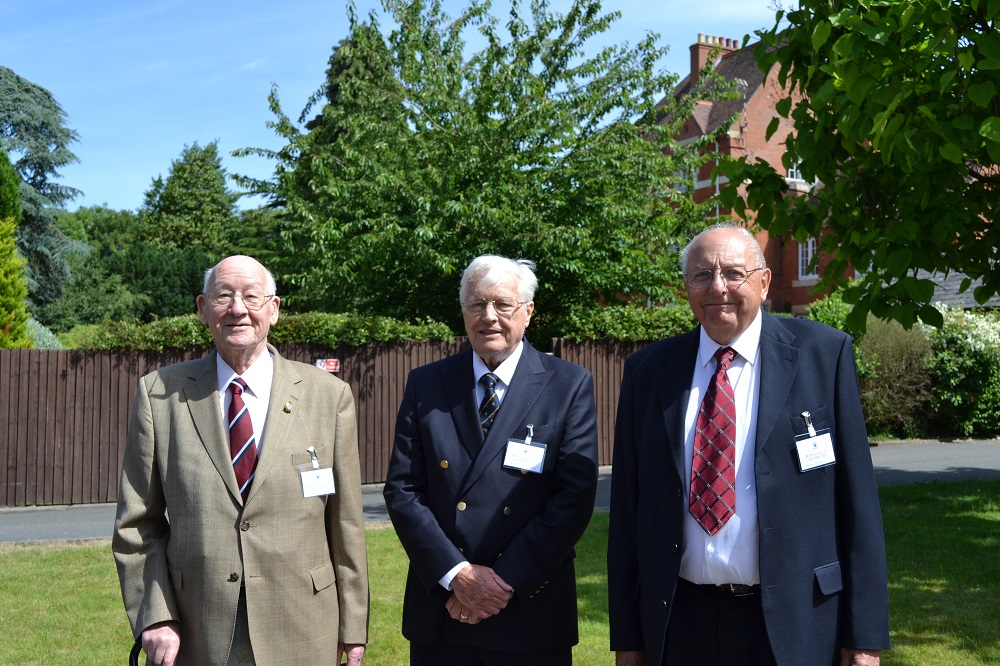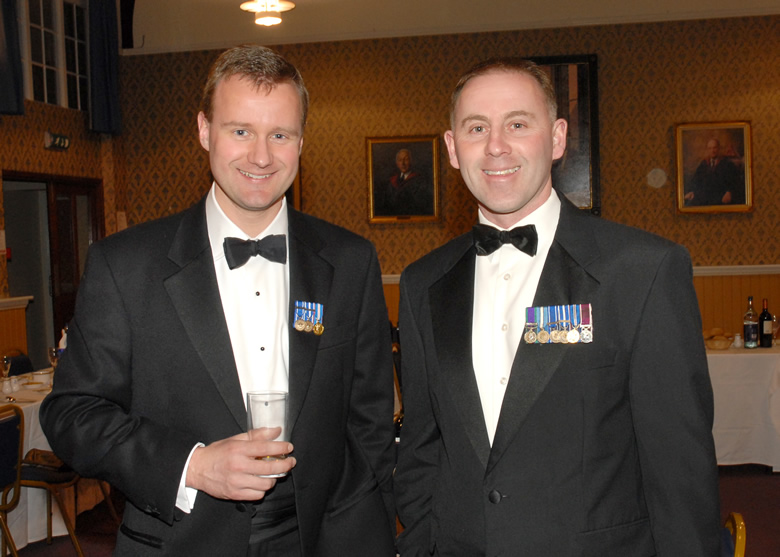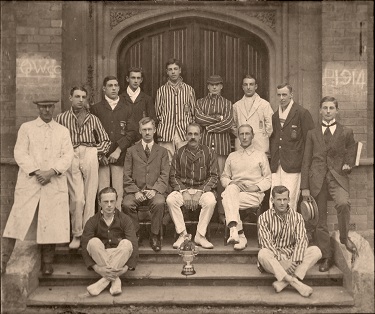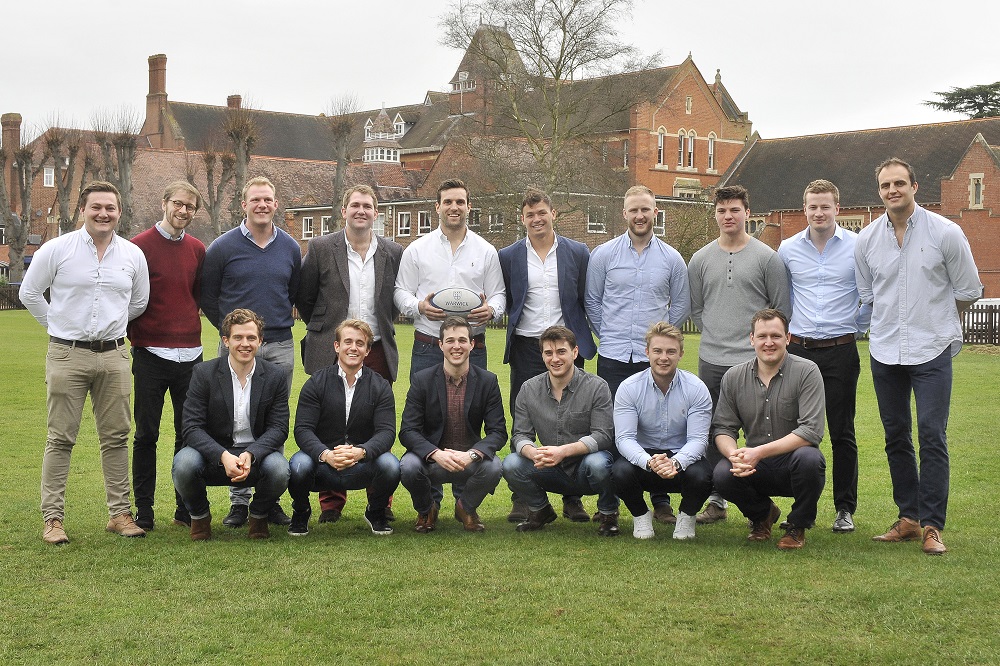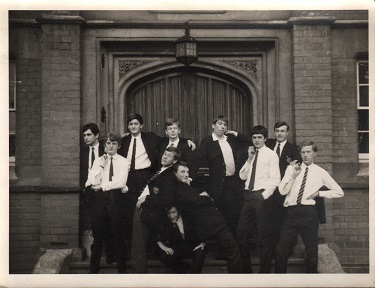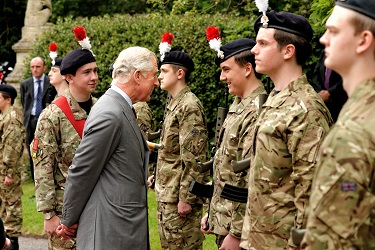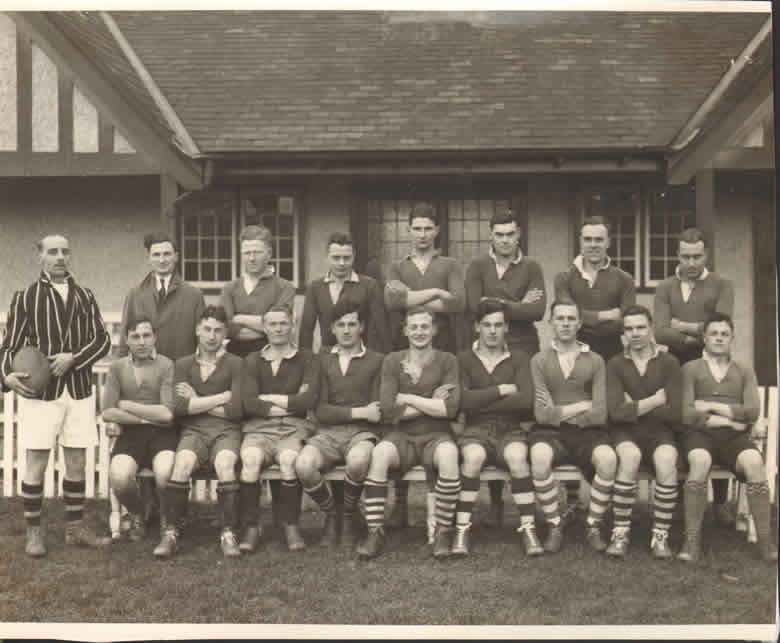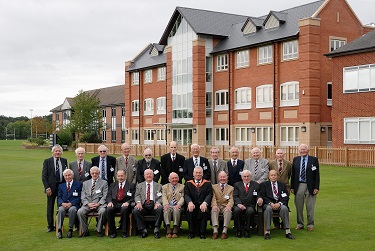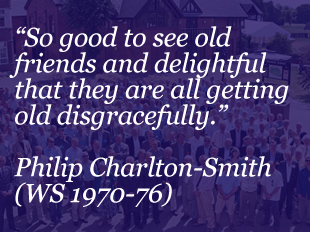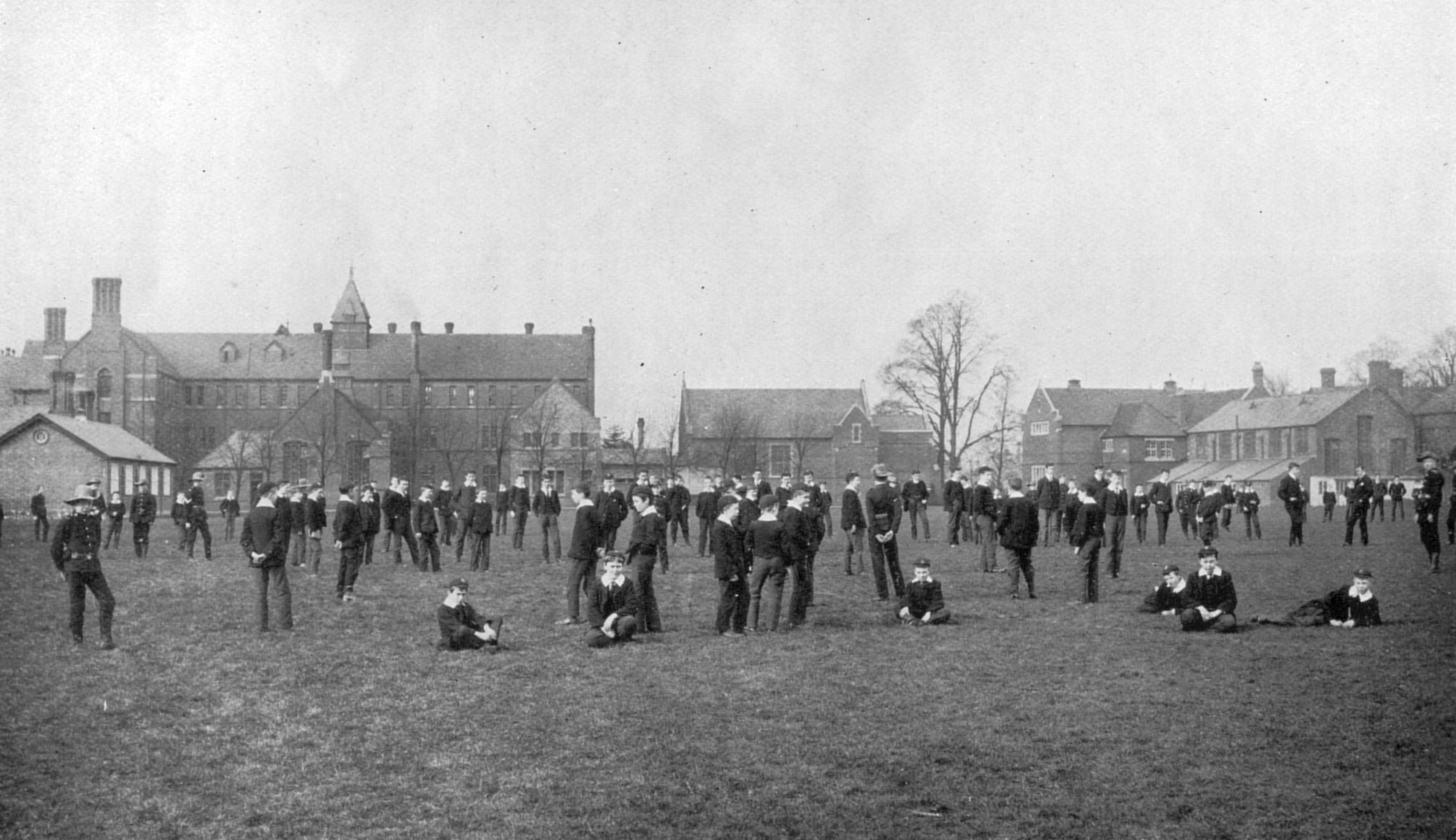The Warwick Pageant of 1906
By G N Frykman School Archivist, 2009.
“The biggest thing which has ever happened to Warwick”
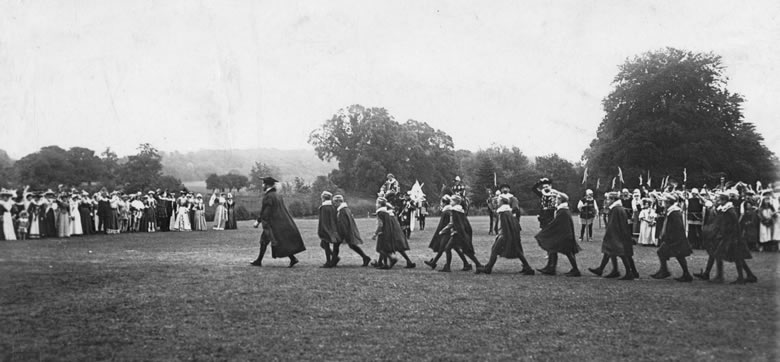
Pageant House
The large house next to the Court House in Jury Street belonged in the nineteenth century to the influential Greenway family, and by 1850 its garden had extended behind the Court House to a gateway into Castle Street. George Cattell Greenway became Town Clerk and a partner with his brother Kelynge Greenway, in Greenway, Smith and Greenways Bank; both were implicated in the bank’s spectacular failure in 1887 and served terms in jail. The house was on the market at the time of the Pageant, and No. 2 Jury Street was used in 1905 and 1906 for the purposes of the Pageant by the generosity of Sir Edward Montague Nelson (1841 – 1919), first Mayor of Ealing, and Mayor of Warwick in 1917. Afterwards it was bought with the proceeds and presented to the town; it became the Pageant House and its enlarged garden, the Pageant Garden, is now a much valued green oasis in the town centre, and is widely used for wedding photographs!
Biography of Louis N Parker
Louis Napoleon Parker was born in Calvados, France, of American parents in 1852. At the age of 17, he entered the Royal Academy of Music in London and was Director of Music at Sherborne School, Dorset from 1874 to 1892. His first Pageant was held in the grounds of Sherborne Castle, in 1905, to celebrate “1,200 years of the town, the bishopric and the school”, followed by Warwick in 1906 and Bury St Edmunds in 1907. 1908 saw him in Dover, and in 1909 Colchester and York. He announced in 1911 that more than 15,000 performers had gone through his hands, and audiences had reached a quarter of a million – and $75,000 had gone to charities… After developing this hugely successful genre from nothing, he let others take over – indeed “Pageantitis” had swept over Britain, and rivals started their own shows, starting at Oxford in 1907. After about 1910 Louis N Parker concentrated once more on being a playwright. He died in 1944, in Devon.
Development of the Pageant
The Pageant was performed in the grounds of Warwick Castle during the week of 2nd to 7th July 1906 and was a major undertaking. In 1905 the Warwick town authorities had approached Louis N Parker and asked him to "add another triumph" to that which he had achieved with the Sherborne Pageant in Dorset, even though that one only used 820 performers. The excuse for the Warwick Pageant was that it should celebrate “the Commemoration of the Thousandth Anniversary of the Conquest of Mercia by Queen Ethelfleda”.
Souvenir brochure – Introduction: “The seed of the Warwick Pageant was sown by Mr Edward Hicks of The Warwick Advertiser. The use of the Castle grounds was sanctioned by the Earl of Warwick; the Mayor of that time (Mr M H Lakin) placed the seal of official approval on the scheme by opening the guarantee fund with the handsome sum of 100 guineas; and the heads of secondary schools of Warwick responded with alacrity to an invitation to constitute themselves a provisional committee, with the present Mayor (Alderman T Kemp, FRHistS) as Chairman and Mr Hicks as Honorary Secretary. The outcome of the Committee’s deliberations was a deputation to Mr Louis N Parker, the well-known playwright, who was urged to add another triumph to that which he had just achieved as Master of the Sherborne Pageant. And when he was reminded of some of the stirring events in the town’s long history he gladly undertook the task. Mr Parker consented to address a town’s meeting on the subject of Pageantry, and on October 13th the Court House was filled with townsfolk eager to hear him. The gathering was representative of every class in Warwick. The Earl of Warwick and his humblest cottager, leaders of the Anglican and Nonconformist churches, professional men and tradesmen, were all there, and all caught the charm of Mr Parker’s oratory...
It has been a leading principle that, as far as possible, everything used in the Pageant should be designed and made in Warwick. Thus, in regard to the costumes for the two thousand performers, local artists, have supplied the designs in nearly every instance, and three hundred ladies, working with praiseworthy perseverance, have actually made 1,400 of the costumes. No pains have been spared to secure accuracy of design. The British Museum has been visited, illustrations in rare books have been copied, and brasses in old churches rubbed, in order that the principal characters may be represented in their habit as they lived. For instance, the costume of Thomas Oken has been made in accordance with rubbings taken from the memorial brass to the Elizabethan philanthropist in St Mary’s Church. Guy of Warwick is arrayed as he appears in the celebrated Bayeux Tapestry. The Ancient Britons wear real deerskins from Stoneleigh Park. With two exceptions, all the stage properties have been made by amateur artificers under the direction of Mr J N Bolton. The exceptions are Queen Elizabeth’s travelling coach and her state barge. The former, designed in accordance with a rare print in the Victoria and Albert Museum, Kensington, has been constructed by a Warwick firm of builders; the latter, 63 feet long, is the work of another local firm, and is equally correct to the period. The handsome mace used in the tenth episode is a copy of that presented to Queen Elizabeth to the City of Norwich, and has been presented to the Pageant Committee by Mr T H Kendall of Warwick. The monstrous head of the Dun Cow of Dunsmore heath, designed by Mr Bolton on lines indicated by the legend, is the most ambitious, as it is the most successful production of Warwick’s amateur craftsmen.
Forty amateur artists, working in conjunction with the artificers, and supplementing their efforts, have painted many beautiful mediaeval banners for Churches and Guilds, in addition to producing elaborate designs on materials for costumes. Clerks in offices have spent their evenings for weeks past fashioning swords, spears, battle-axes, shields and arquebuses. The scene of most of this enthusiastic work has been “The Pageant House”.
Oct 28th, 1905: “It was further decided that participation in the Pageant be not limited to residents of Warwick, but be extended to persons living in the neighbourhood… About 1,000 performers are required from all classes of society. It should be clearly understood that those participating in the Pageant as performers will do so anonymously.”
Dec 16th, 1905: In the Shire Hall, Louis N Parker “fired the imagination and roused the ardour of 700 of his fellow citizens with the wonderful story of Warwick’s past. “There are, of course, obvious reasons for not giving too many details of the selected episodes at the present moment. The libretto has to be read next Wednesday afternoon before a county audience presided over by the Lord Lieutenant (the Marquis of Hertford)... There will be more than a thousand characters, and nearly 200 speaking parts, many of which call for histrionic ability of the highest order.”
Feb 3rd, 1906: “The Ladies’ Committee are making civic robes for the burgesses from the authentic designs furnished by the mayor (Alderman T Kemp) but the persons who wear them are expected to provide their own nether garments.”
April 14th, 1906: “The number of seats booked has risen to 7,600. Mr H S Pyne has been elected Chairman of the Press, Advertising and printing Committee in succession to Rev W T Keeling, who has resigned the post.”
June 9th, 1906: Leach’s History of Warwick School published. “The board lined felt roof of the grand stand [which can hold 4,800 people] is in one gentle slope at an angle that collects the sound waves and delivers them distinctly to the very back of the stand, which is 280 feet long… On Monday next tents will be erected for performers who will be able to rest in them when not taking part in the Episodes. Dressing tents will also be provided, although it is expected that the bulk of the performers will don a portion of their costumes at home… Nearly 15,100 seats have now been booked.” The paper announced: Wednesday June 13th, 6.30pm full rehearsal, Thursday, June 14th, first full dress rehearsal.
June 23rd, 1906: “There will be another dress rehearsal on Wednesday next, commencing at 5.30pm, and admission is restricted to Warwick residents only. The price of admission will be 6d. The Committee have invited the inmates of the Warwick Workhouse, the Midland Counties Home for Incurables (Leamington), the children from the Cripples’ Home (Emscote) and the inmates of the Almshouses to this performance. No tickets will be issued, and it is expected that only the poor of Warwick will attend.”
From Louis N Parker: “Ladies and Gentlemen – the rehearsal [on June 21st] was eminently satisfactory. I am very proud of you. But there is still a great deal too much peeping. Now we must tune the whole thing up to concert pitch, and keep it there!”
The Language of the Libretto
It has to be said that the libretto of the 1906 Pageant is not what we would expect these days for an attempt to recreate historical events. Rather than make fun of it, we should remember that the Pageant secured almost universally ecstatic reviews. Louis N Parker explains what inspired him: “In arranging the Warwick Pageant I have clung as closely as the exigencies of time and space would allow to history and tradition. My chief authorities have been The Countess of Warwick’s “Warwick Castle” and Mr Thomas Kemp’s “A History of Warwick and its People”, but I have used “The Black Book of Warwick” and “The Book of John Fisher” very freely. I have also taken hints from “The Rowl of Master John Rows of Warrewyk” and I am acquainted with Dugdale, Field, Smith, Rivington, Burgess and a number of minor pamphlets. I think I may say I have some sort of authority for every action represented, if not for every word spoken. I have been specially favoured in my Collaborators. My old and tried friend Mr James Rhoades has dignified the whole Pageant with his verse; Mr Edward Hicks, not content with helping me in all sorts of ways with extraordinary patience and enthusiasm, has also contributed the greater part of the First Episode; The Rev W T Keeling, Headmaster of Warwick School, has written a Latin Carmen which I expect the school will be singing centuries hence; Miss Ahrons has exercised her graceful muse in the service of the High School for Girls; and I wish to express my very particular thanks to the authors of Episodes VI and VII – Kit Marlowe and William Shakespeare.”
The First Night
July 2nd, 1906: “Five thousand men and women who sat through a performance which lasted nearly three hours without a single interval, and who were never for a moment bored or impatient. It was an audience that was largely American.”
“Warwick was gay with bunting and banners today, and the streets were crowded with people whose accent bespoke many nationalities. For more than an hour before the opening carriages of every description drove up to the Castle gateway, and a little before three o’clock the Mayor and Town Council took their places in the stand. Among those present, who numbered fully five thousand, were the Earl and Countess of Warwick, Lord Leigh, Viscount and Lady Helmsley, Lord Algernon Perey, Viscount and Viscountess Hereford, Lady Anna Chandos-Pole, Lady Mordaunt, Captain Sir Wroth and Lady Lethbridge, Lady Peel, Sir William Jaffray, Miss Ellen Terry, Miss Marie Corelli, Master Gordon Bland, Mr Cuthbert Kemp and the Masters of Rugby and Repton.”
The Players: The following ladies and gentlemen played the leading parts:
Kymbeline: Mr Holte
Caradoc: Mr Sutton
Ethelfleda: Miss Dickens
Piers Gaveston: Mr Rybot
Lancaster: Mr Robb
Warwick: Mr H Brown
Roger de Newburgh: Mr C Brown
Gundrada: Miss Browne
Shakespeare: A boy from Stratford
Queen Elizabeth: Mrs H Batchelor
Leicester: Earl of Yarmouth
Thomas Fisher: Mr Sam Browne
Mrs Thomas Fisher: Mrs Sam Browne
Recorder: Mr Kemp (Mayor of Warwick).
There also took part in various episodes Lord and Lady Willoughby de Broke, Lady Heath, Lady Victoria de Trafford and the Rev Ralph Goodenough.”
From The Warwick Advertiser: Proceeding to the Conservatory in which is enshrined the world-famous Warwick Vase, one sees across the lawn a huge timber structure which does not exactly enhance the landscape. But this structure is found to perform the same service as the curtain at an ordinary theatre. Climb one of the staircases and there suddenly opens out to you an immense vista of woodland and river and glade which almost takes your breath away by its exquisite natural beauty. The huge grandstand, for such the timber structure proves to be, is thronged with nearly 5,000 spectators, but on the level expanse in front not a soul is to be seen, although it is evident, when the hidden orchestra begins to play, that near at hand there are peacocks who are not over-pleased at this invasion of their domain. The river which flows along the bottom of the arena looks like burnished silver in the sunlight, and almost as placid as the Avon are the herds of deer and cattle which graze on the island and the park beyond, perfectly undisturbed by the audience on the grandstand. Truly, Mr Parker has chosen a splendid site for the unfolding of a Pageant of the past.
And where is Mr Parker meanwhile? Very few of the audience have the slightest idea that out of sight on the roof of the grandstand the Master of the Pageant stands ready to press the electric button which will start the play. There he is, however, in his little eyrie, with the well-known megaphone handy to “shoot” performers who have the temerity to show their noses before the proper time. Experience has proved that people on the grandstand do not hear the megaphone on the roof, so Mr Parker makes use of it whenever he feels like doing so – which is not so often as might be expected, considering that Warwick, the heart of England, is also the home of beauty! Occasionally messages pass through the speaking tube leading from the roof to the orchestra, where Mr Blackall stands with baton in hand, ready to begin. The Master of the Music, trying to look careless and happy, exchanges a remark with the leader of the orchestra (Mr Walter Warren) while the bandmaster (Mr Cocking) casts a critical glance over his men. A short distance away Mr Dyer, the champion timpanist, campanologist, trianglist, eyes his various instruments kindly but firmly, eager to let loose the thunder and set the church bells a-chiming to the wonderment of all hearers.
But where are the performers? Behind every inch of cover they are swarming, keen to hear the electric bells which will summon them in turn to seek glory on the arena. There are nearly 2,000 of them; men, women and children, rushing hither and thither, laughing and excited, and all bent on keeping out of sight. The Stage manager of Episode 1 looks anxiously about him to see whether all the “speaking Britons” are ready; then a long ring is heard, followed by two short ones, and every performer has to look after himself – for the performance has begun.
“There was a persistent rumour on the Wednesday that the King was present.”
The Music
With the exception of the Carmen, sang while the boys of Warwick School were performing (which piece forms the school song to this day), all the music of the Pageant was composed by Allen K Blackall, Pyne’s music master at the County School in The Butts, organist of St Mary’s, later music master at Warwick School (1906 – 27) and Principal of the Birmingham School of Music from 1934 - 1945. Warwick School possesses the autograph orchestral parts for the Pageant March of 1906, which is presumably the “Solemn March” which opened the proceedings each night, performed in 1906 by a “hidden orchestra” and also the Band of the 2nd Battalion, The Royal Warwickshire Regiment.
The Film
I acknowledge the help given by Warwickshire County Record Office.
The contents of the film, from the NFA Catalogue
A record of the pageant held in the grounds of Warwick Castle in 1906, depicting incidents in Warwick history from AD40 to 1572.
REEL 1. Shots of Warwick Castle and the grounds showing the rope ferry in operation and the Old Mill and weir (32-173):
EPISODE 1; a procession of Druids round an altar (174-219): the priests light the sacrificial fires (259): a child is seized and walled in under the altar (287): King Carodoc orders his release (305): a battle between Romans and Britons (308): King Caradoc is taken prisoner by the Romans (363):
EPISODE 2; THE BEAR AND RAGGED STAFF: The Britons enter with Arthal and Movid leading a bear and a tree trunk (366-406):
EPISODE 3; ETHELFLEDA AD 906: Queen Ethelfleda arrives with a number of captive Danes (411-461):
EPISODE 4; GUY OF WARWICK AD 920: Guy returns to Phyllida and tells her he has slain the Dun Cow (464-488): the Dun Cow's head is brought in, Guy and Phyllida are betrothed and lead in triumph to church (529):
EPISODE 5; ROGER DE NEWBURGH AD 1123: Roger returns with the Templar Knights and surprises Lady Gunrada playing with her Maids of Honour (535-553):
EPISODE 6; BASED ON SCENES FROM MARLOWE'S "EDWARD II" - PIERS GAVESTON AD 1312: Gaveston is created Lord High Chamberlain by the King (563-594): the Bishop of Coventry enters and is degraded by Gaveston (634): Gaveston is seized as a disturber of the peace (653): he is tried by his peers (679): he is lead off by the executioner (684):
EPISODE 7; THE KINGMAKER (SHAKESPEARE AD 1464): King Louis of France receives Queen Margaret, Warwick who is present hears the news of King Edward's marriage (690-719): Louis and his retinue depart (759): Warwick, having returned, seizes Edward (782):
EPISODE 8; THE CHARTERS AD 1564: the Charter being given to Warwick School (788-817): Ambrose Dudley arrives (830):
EPISODE 9: THE NINE DAYS QUEEN AD 1533: Thomas Fisher is condemned to death for treason, but is saved by Dame Fisher who falls on his breast as the soldiers are about to fire; the captain of the soldiers frees them both (836-844):
REEL 2: EPISODE 10; ELIZABETH AD 1572: a scriviner is put in the stocks (849-867): a meeting of councillors at Stratford (875): a procession with the Earl of Leycester (923): Queen Elizabeth arrives at Warwick Castle (940): Leycester kisses her hand (973): the Queen holds court (1010): the boys of King's County School, Warwick cheer the Queen (1020): boys and girls perform a pastoral dance before the Queen (1100): the Queen leaves for the island in the Avon by barge (1174): the Queen returns and disembarks (1307):
THE MARCH PAST: all the characters in the pageant form a procession and march past the camera (1312-1585) THE END (1588).
